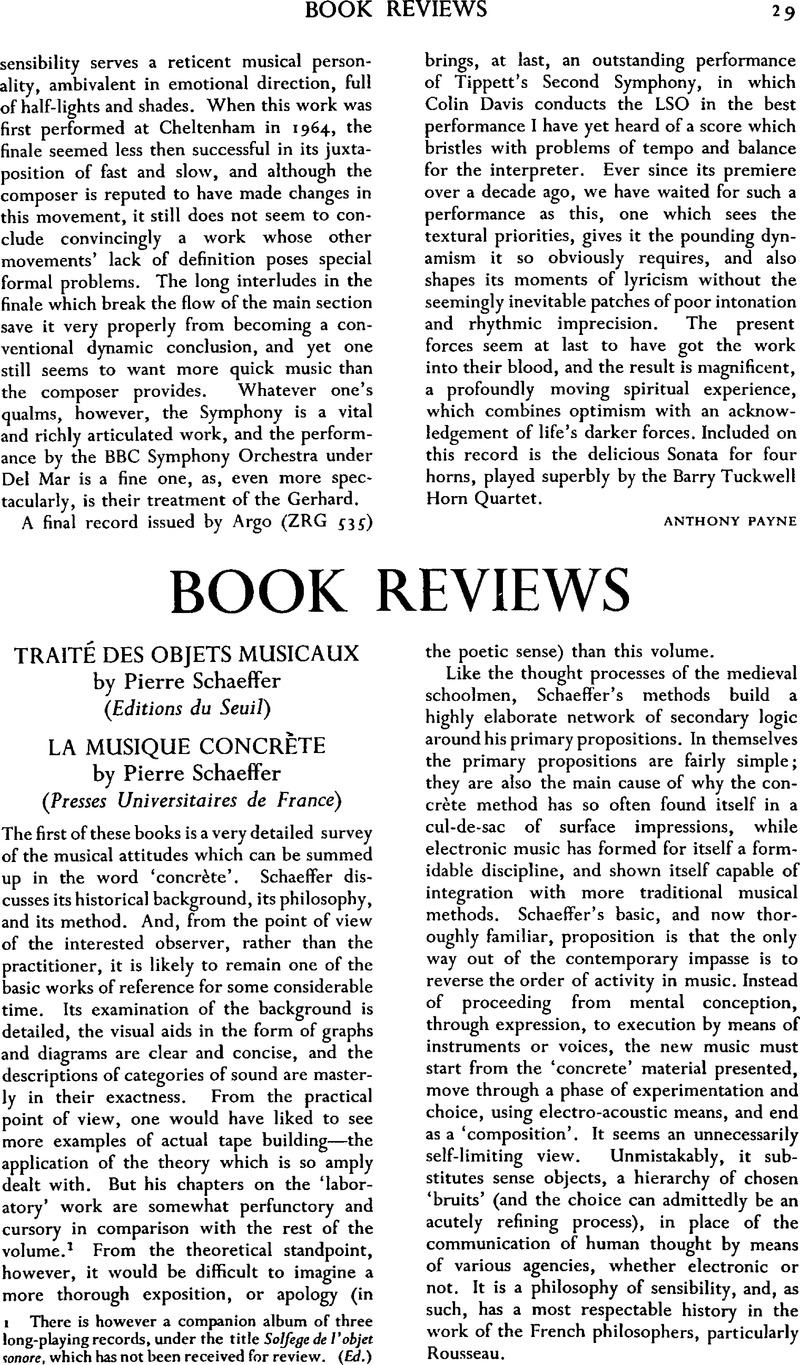No CrossRef data available.
Article contents
Book Guide
Published online by Cambridge University Press: 04 February 2010
Abstract

- Type
- Book Guide
- Information
- Copyright
- Copyright © Cambridge University Press 1968
References
1 There is however a companion album of three long-playing records, under the title Solfege de l'objet sonore, which has not been received for review. (Ed.)
1 Cintece poporale rominesti din Comitatul Bihor (Bucharest 1913)Google Scholar; Volksmusik der Rumanen von Maramures (Munich 1923)Google Scholar; Melodien der Rumanischen Colinde (Weihnachtslieder) (Vienna 1935)Google Scholar.
2 Part of the original manuscripts is preserved in Budapest together with most of his phonograph cylinders, in the Ethnographical Museum—referred to by Bartók under its former name as the Department of Anthropology of the Hungarian National Museum.
3 Bartók, Béla and Lord, A., Serbo-Croatian Folk Songs (New York 1951)Google Scholar.
4 His first large-scale work of systematization, A Magyar Nepdal (Hungarian Folk Music), appeared in Hungarian in 1924 and in English in 1931.
5 Here we may ask what prevented the publisher from providing at least a sketch map for the place names so frequently mentioned in these three volumes.


